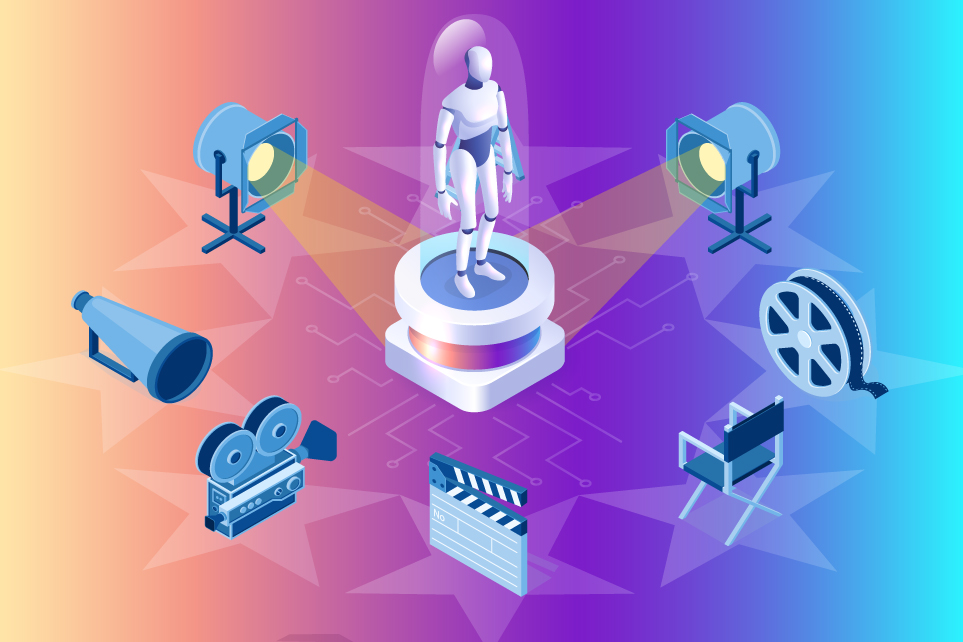
The global entertainment industry is witnessing another technological revolution as Google introduces Veo 3.1, its latest AI-powered video generation model. Combining advanced storytelling intelligence with cinematic precision, Veo 3.1 is set to redefine how movies, ads, and digital content are produced — blurring the line between human creativity and machine innovation.
Veo 3.1: A New Chapter in AI Filmmaking
Google’s Veo 3.1 brings powerful improvements in realism, lighting, and emotional tone to AI-generated videos. Unlike previous AI models, it focuses not just on image quality but on narrative depth — helping creators craft emotionally engaging video sequences. The new system also enables high-definition cinematic rendering, offering filmmakers a toolset once limited to expensive production studios.
This development puts Google in direct competition with OpenAI’s Sora 2, marking a new phase in the AI video generation race that’s reshaping the entertainment landscape.
Flow Tool Upgrades for Creative Professionals
Accompanying the launch, Google has upgraded its Flow filmmaking tool to seamlessly integrate with Veo 3.1. The update introduces new AI capabilities such as:
- Audio Generation: Automatically designs background sounds, dialogues, and ambient effects.
- Ingredients to Video: Converts multiple still images or character sketches into a fluid, realistic scene.
- Scene Extension: Extends existing clips with contextual visuals, ensuring continuity and cinematic pacing.
- Frames to Video: Merges two or more photos into a smooth motion sequence, perfect for short films and teaser content.
These tools simplify production for independent creators, film studios, and social media influencers, cutting costs and turnaround time dramatically.
AI in the Entertainment Ecosystem
From Hollywood studios to regional content creators, the integration of AI in filmmaking is accelerating. Tools like Veo 3.1 empower storytellers to experiment with concepts, preview visual ideas, and generate trailers or prototypes — all without expensive cameras or large crews.
Analysts believe that AI models like Veo could soon become part of major production pipelines, helping directors visualize scripts, plan scenes, and even simulate full storyboards. As traditional production merges with AI-driven processes, the global entertainment industry is entering a phase of hybrid creativity.
Accessibility and Availability
Veo 3.1 and Veo 3.1 Fast are currently accessible through Gemini App, Gemini API, and Vertex AI, making it easy for professionals and hobbyists to explore its features. The model supports both 16:9 and 9:16 formats, suitable for cinematic films as well as short-form content on platforms like YouTube, Instagram, and TikTok.
Google has confirmed that future updates to the Flow tool will include object and character removal, enhancing post-production flexibility and creative control.
Shaping the Future Beyond Traditional Production
Veo 3.1’s arrival comes at a time when the entertainment industry is redefining how stories are produced and consumed. With AI generating visually stunning and story-rich content, the demand for authentic and licensed media is increasing.
Instead of relying on unreliable free movie download or New movie download sources, audiences are now shifting toward AI-enhanced streaming experiences — where personalization, virtual production, and real-time editing create immersive, original content.
As Google pushes the boundaries of AI-powered creativity, Veo 3.1 stands as a game-changer for the global entertainment ecosystem. By merging cinematic artistry with cutting-edge technology, it opens doors for filmmakers, advertisers, and content creators to tell stories like never before. In an era where innovation defines success, AI has officially become the new director behind the camera.



